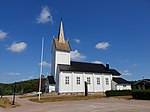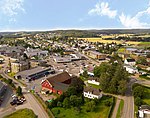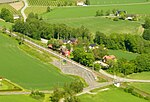Stokke

Stokke is a town in Sandefjord municipality in Vestfold County, Norway. It lies in-between Sandefjord and Tønsberg, two of Vestfold's largest cities. It was a municipality from 1838 to 2016. The administrative centre of the municipality was the village of Stokke, while minor villages were Vear, Melsomvik, Storevar, and Valberg. On 1 January 2017, the municipality, along with Andebu, became a part of Sandefjord municipality. The village of Vear was transferred from Stokke to neighboring Tønsberg on the same day. The town of Stokke was home to 3,391 inhabitants as of 2016. The decision to merge into Sandefjord was part of a nationwide municipal reform by the Solberg Cabinet. 77.8 percent of Stokke residents voted to merge into Sandefjord during the September 2015 elections.
Excerpt from the Wikipedia article Stokke (License: CC BY-SA 3.0, Authors, Images).Stokke
Borgeveien, Sandefjord
Geographical coordinates (GPS) Address Nearby Places Show on map
Geographical coordinates (GPS)
| Latitude | Longitude |
|---|---|
| N 59.24 ° | E 10.270833333333 ° |
Address
Borgeveien
Borgeveien
3160 Sandefjord
Norway
Open on Google Maps









